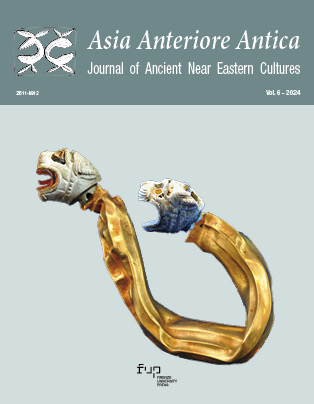Anthropoid ‘Philistine’ sarcophagi: concluding remarks?
DOI:
https://doi.org/10.36253/asiana-2467Keywords:
Anthropoid terracotta sarcophagi, Multiple burials within the coffin, Open-hearth firing, Sea-Peoples, Dorsal decubitusAbstract
The care taken to preserve the bodily integrity of the deceased within an anthropoid sarcophagus is a particular funerary tradition, characteristic of ancient Egypt, but also documented by a number of findings in the Near Eastern area that testify to episodes of a phenomenon of emulation. In the area of Palestine and Transjordan, the discovery of so-called ‘Philistine’ anthropoid sarcophagi dated to a period between the end of the Late Bronze Age and the Iron Age II (13th-8th centuries BC) has been documented; the presence of these terracotta specimens can be interpreted as the adoption of a foreign tradition by a group of individuals characterized by authority and economic availability and testifies to a receptive (i.e., passive) emulation relationship. This examination of the documentation has revealed historical patterns and dynamics that testify to the prolonged presence in an upper class (by authority and/or economic availability) of a strong cultural and ideological attraction (and openness) of the Levant to Egyptian culture, traceable over a long period of time.
Downloads
Published
Issue
Section
License
Copyright (c) 2024 Marco Rossi

This work is licensed under a Creative Commons Attribution 4.0 International License.
- Copyright on any open access article in AsiAna published by FUP is retained by the author(s).
- Authors grant FUP a license to publish the article and identify itself as the original publisher.
- Authors also grant any third party the right to use the article freely as long as its integrity is maintained and its original authors, citation details and publisher are identified.
- The Creative Commons Attribution License 4.0 formalizes these and other terms and conditions of publishing articles.
- In accordance with our Open Data policy, the Creative Commons CC0 1.0 Public Domain Dedication waiver applies to all published data in AsiAna open access articles.


